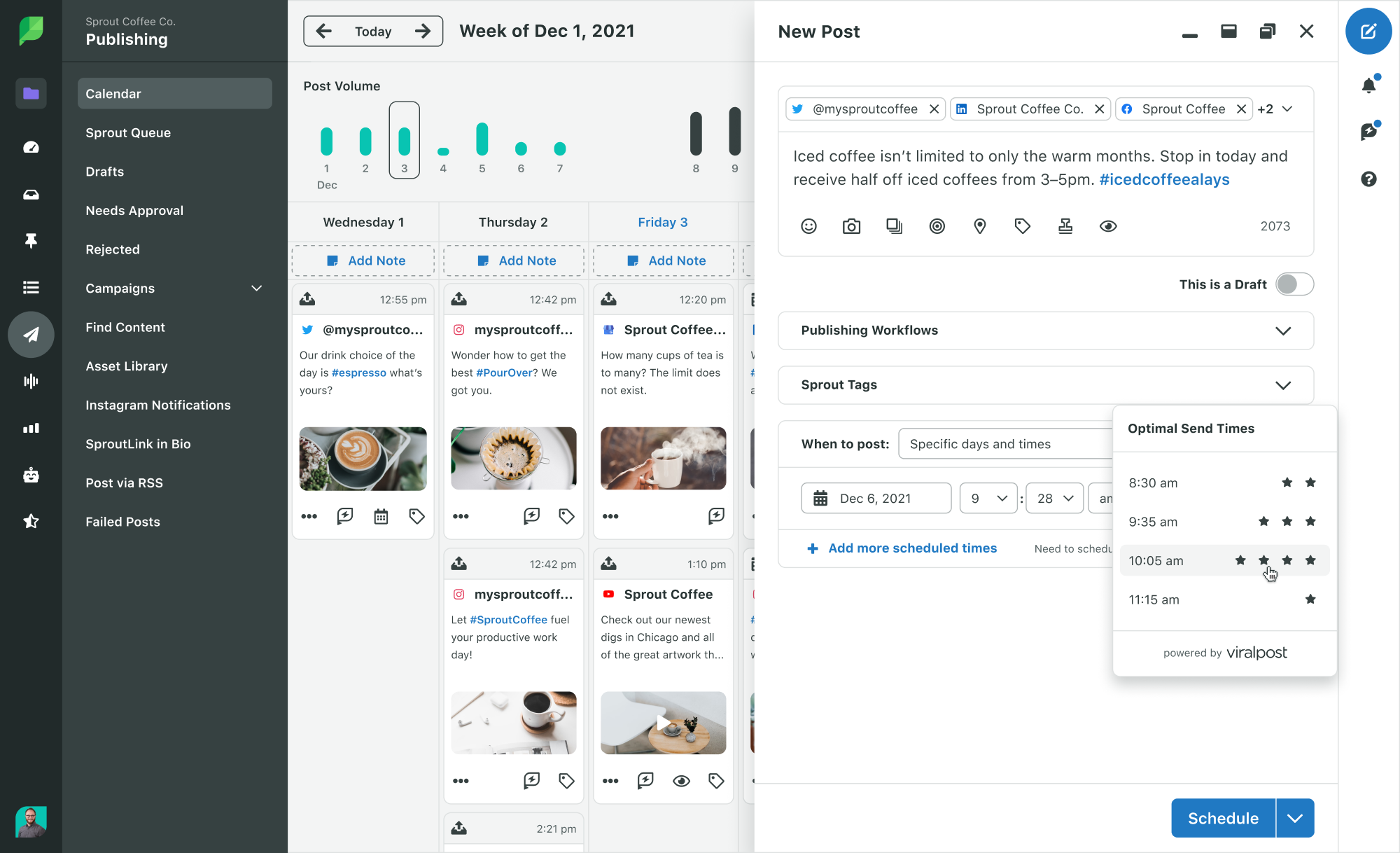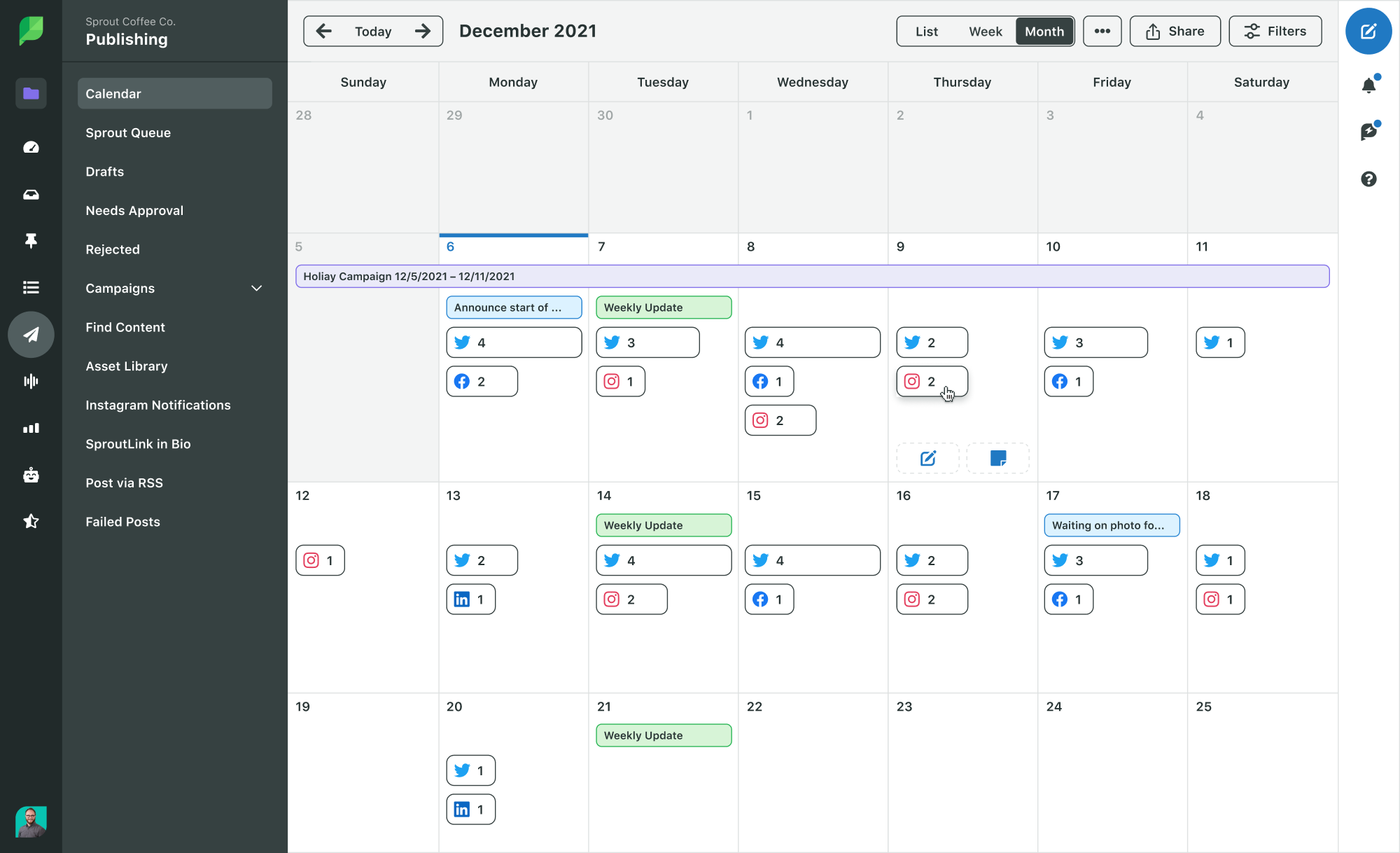How to craft an effective social media content strategy
Written by Sarah Aboulhosn
Published on September 27, 2019
Reading time 7 minutes

The content you post on social media has the power to turn your brand into a household name and turn your followers into fans. This kind of impact only comes from having a solid social media content strategy. It’s not enough to show up on every platform and sporadically update your audience when you have the time. The way to stand out on social media is to identify specific goals, create valuable posts that align with those goals, and distribute content on the right platforms. Then you can measure your results, and fine-tune your strategy over time.
There isn’t one cookie-cutter social media strategy that will guarantee success. Your strategy will differ depending on your industry and audience. There are, however, specific steps you should follow to build out a plan that has longevity and helps your brand and business grow.
Identify and set goals
The first step towards a long-term social media strategy is to set your content goals. Having goals in mind will help you start planning out the type of content to create.

This process involves digging deep into your brand values as well as researching your audience.
Start by getting clear on your overall marketing goals and how you want your content marketing strategy to serve those goals. The more specific your marketing goals are, the better you will be able to tailor your social media content to meet those goals. For example, let’s say that your marketing goals are to convert more sales from social media. Then your strategy should incorporate posts that move people to a landing page or another part of your marketing funnel.
Use Sprout Social to boost your content strategy
Power up your content planning with robust insights from Sprout Social’s reporting.
In addition to social analytics, Sprout helps you coordinate content across team members with a full suite of collaboration features.
Start your 30-day free trial and see how much easier Sprout can make planning and posting social content.
Plan your social content
Once you’re clear on your goals, it’s time to conduct a social media content audit on the content you’ve created so far. Look at which posts performed well, which ones didn’t and what you posted on each platform. If you’re using a social media management platform like Sprout Social, you can look at all of your social media data and analytics in one place. You can use Sprout’s Report Builder for a holistic view of how all of your social media content is performing.

Even without a social media tool, you can analyze your data by exporting each platform’s analytics into a spreadsheet.
Facebook, Twitter, Pinterest Business and LinkedIn Business accounts let you easily export your post and page analytics directly from the platform.
What you look for in the audit should align directly with your content goals. For example, if one of your goals is to improve brand awareness, then look at your follower count on each platform and identify which posts resulted in new followers. Now you have an idea of what types of content help expose your brand to new people who want to follow you.
A content audit will help you substantiate what you think is working well with quantitative data that shows you how each post performs.
You might notice a disconnect between posts you think should do well and the actual top performers. In this case, look closely at the language and tone you’re using on the underperforming content. You may have strayed away from your brand’s authentic voice. Your followers may interpret those posts as inauthentic or irrelevant, causing a decrease in engagement. Irrelevant posts are the second largest reason consumers unfollow brands on social media.

Some posts serve to help you meet bigger marketing goals. But even promotional content should be on brand and true to your voice. Remember that your audience began following you for a reason.
Stick with your unique voice and style as much as possible and create content that authentically markets your brand.
Having a consistent brand voice will also help you have a better understanding of who your audience is. You can’t create good social content without knowing who your followers are. During this phase, do some target audience research. Build a target persona of your audience and can compare it to who you think your target audience should be. Include things like basic demographics, acquisition channels and content preferences.
While you’re doing research, also take note of which platforms your content succeeds most on. You might want to target every social platform but it’s unrealistic to expect to perform well on all of them. You want to allocate your resources to the platforms that serve your brand and your audience the most.
Build a content calendar
Once you know what content performs best and you’ve identified your primary goals, it’s time to build a social media content calendar. A calendar will let you take a big-picture approach to social media content planning. It will help you visualize your ideas and organize them in a way that makes the strategy easier to execute. Your content calendar will be a hub for everything you post.
When planning content, don’t be afraid to repurpose content and schedule it across different social media platforms to get the most out of it. When deciding where to post what content, also consider what types of content perform well on that platform based on your audit. Keep in mind that there are best practices when it comes to the best times to post on each platform. If you want to make finding the right posting times easier, Sprout’s ViralPost feature collects data from your followers and puts together reports that tell you when you post to achieve the most reach.

Your strategy will involve the collective knowledge of a lot of different people within your organization. A content calendar makes it easier to collaborate on social media posts with different people across your company. It’s helpful to collaborate with different departments to create a more well-rounded plan.
Promote and distribute your content
Your social media strategy goes beyond what you post on your social channels. Planning and publishing your content is only a small percentage of a successful social media strategy. A good strategy involves finding ways to actively distribute your content so that as many people as possible see it. When you establish a content distribution strategy, you’ll set up your posts to be shared more widely.
If you actively blog, include share buttons on your posts so your audience can distribute your content to their followers (like the ones you see at the top of this post!).
You can also encourage your audience to engage with your content by asking a question and encouraging them to share their answers, on social media or in the comments section of a blog post.
Other people sharing your content is excellent social proof as well. Your social media content strategy should include responding to or reposting people who share your content.
There are social media tools, like Sprout’s scheduling feature, that make content distribution a no-brainer.

Recognizing when your audience is active and sharing posts at the right time will help you reach more people. If you’re only posting on social media the minute content goes live, you’re missing out on a massive opportunity for optimizing your reach.
Individual social media platforms have their own ways to help you maximize reach as well. On platforms like Twitter and Instagram, utilizing hashtags is a great way to distribute your content further. Hashtags help you reach people who not only follow you but are following a specific trend or interest. On LinkedIn and Facebook, join groups related to your industry and share content when it relates to the conversation.
Another good distribution strategy involves networking with bloggers and content creators in your niche. Other brands are more likely to share your content with their audience if you have a relationship and will return the favor. Just remember that anything you share with your audience should still be valuable to them and relate to your brand.
Measure results
The last step to an effective social media content strategy is measuring the results of all of your efforts. Proper tracking is going to be vital to creating a strategy with longevity. Keeping detailed metrics will help you tweak and optimize your plan over time. Ideally, you should analyze your content every month to keep track of what’s working. When analyzing your data, take a top-level view of your content over a given period. Take a look at how each piece of content performed and what variables it had working with it. Assess how well the content contributed to the overall content goals that you set in step one. A few of the most important social media metrics to measure include:
- Awareness – The number of times people saw your content as told by impressions and reach
- Engagements – The number of reactions, comments, clicks and shares your content gets
- ROI – Conversions and referrals from external sources

Like you did with the content audit, relate the analytics to your overall marketing goals. Using your goals as an anchor can help you accurately adjust your strategy. By measuring analytics each month, you’ll just have to make small tweaks to keep optimizing your social media content strategy.
Putting it all together
Effectively planning a social media content strategy is an ongoing cycle, but it doesn’t have to be overwhelming. Plan out your process with the ideas above and stick to these essential steps to develop content planning that puts a strategic approach first.
If you’re still trying to figure out the right balance of different types of social content for your brand, our free content mix tool can help you optimize your strategy.
Recommended for you
View all Recommended for you- Categories
Hashtags: What they are and how to use them effectively
Published on March 16, 2023 Reading time 13 minutes - Categories
9 popular types of social media content to grow your brand
Published on March 7, 2023 Reading time 17 minutes - Categories
Creating Women’s History Month social media ideas that resonate
Published on February 27, 2023 Reading time 8 minutes - Categories
Smart steps to content development
Published on February 15, 2023 Reading time 10 minutes


Share